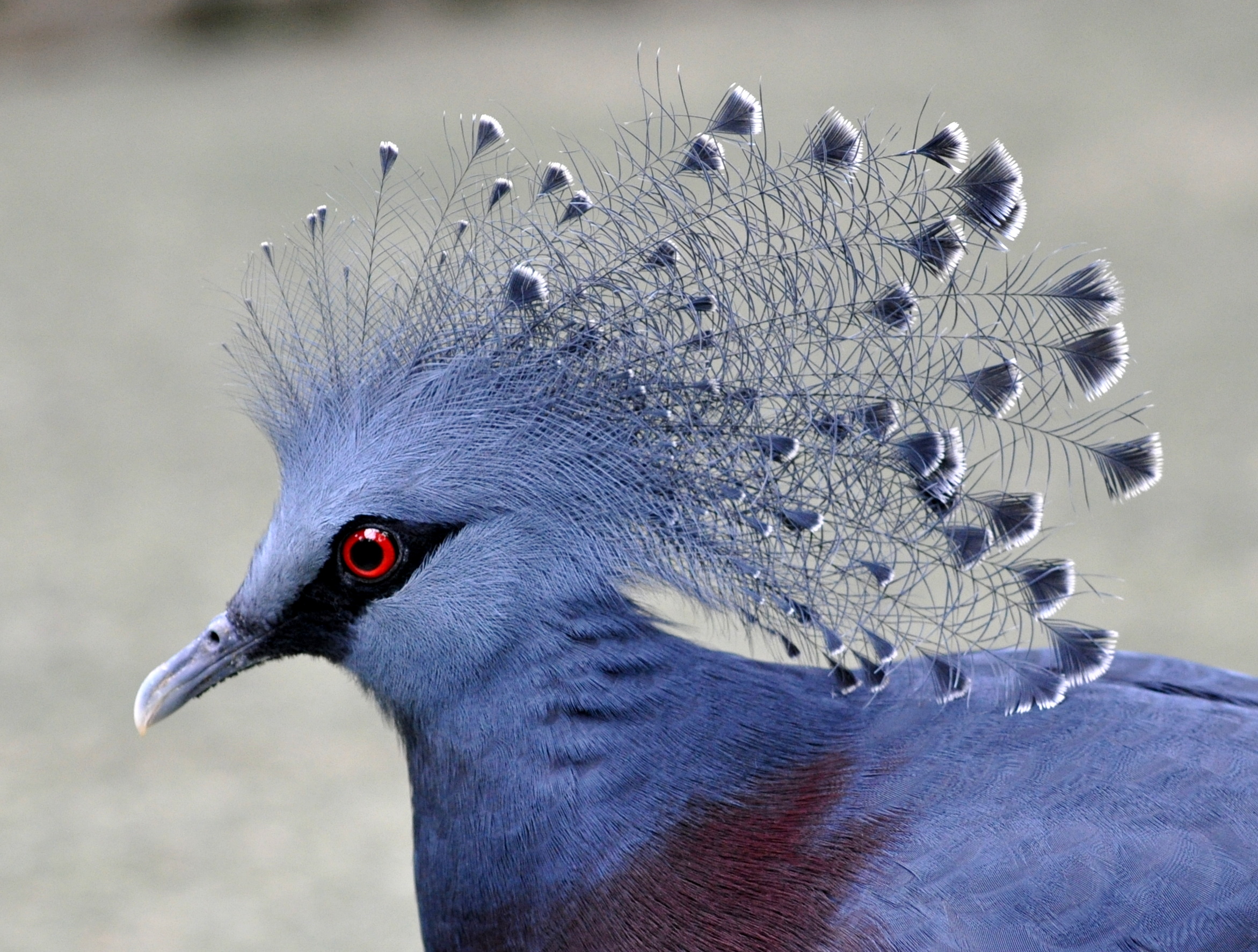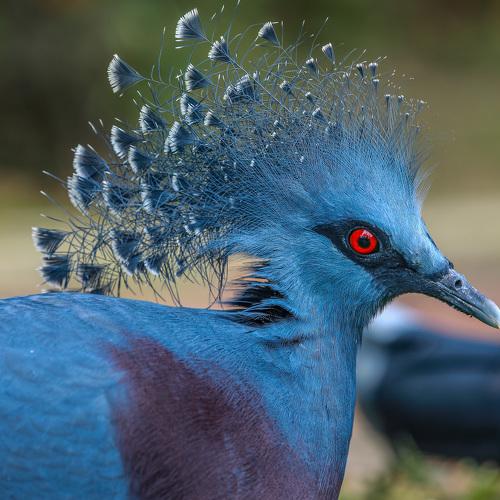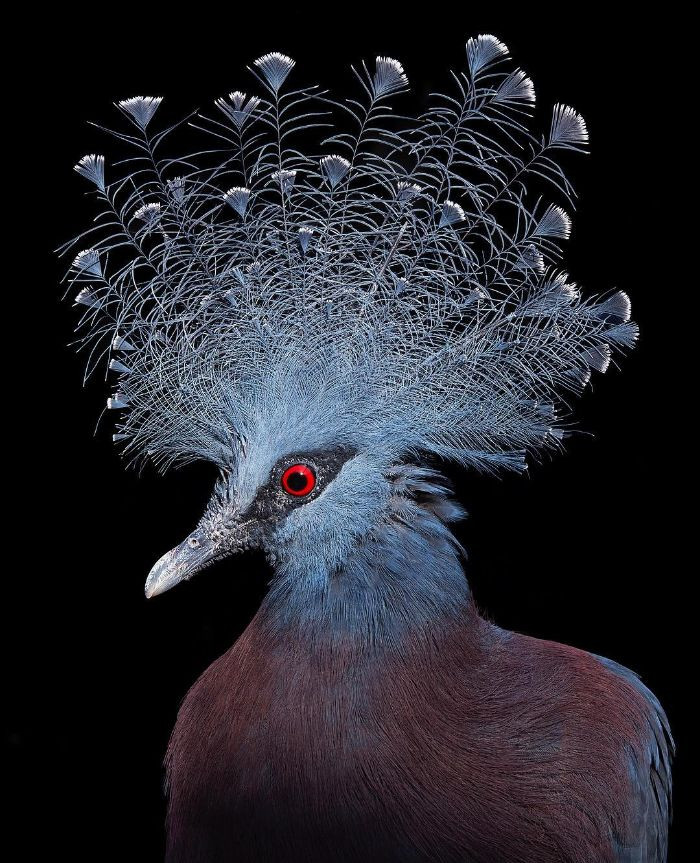
Introduction
The Victoria Crowned Pigeon (Goura victoria) is one of the most visually striking birds in the world, known for its stunning appearance and regal demeanor. Named in honor of Queen Victoria, this bird is native to the lowland rainforests of New Guinea and is the largest member of the pigeon family.
Physical Characteristics
The Victoria Crowned Pigeon is easily recognizable by its majestic blue-grey plumage, striking red eyes, and elegant, lace-like crest of white-tipped feathers that resembles a royal crown. Adult pigeons typically measure between 29 to 30 inches in length and can weigh up to 7.7 pounds, making them one of the largest pigeons in the world. Both males and females share a similar appearance, although males are slightly larger.

Habitat and Distribution
This beautiful bird is found primarily in the lowland rainforests and swamp forests of northern New Guinea and surrounding islands. They prefer dense, humid environments where they can forage on the forest floor while remaining relatively hidden from predators. Their habitat is characterized by rich biodiversity, providing ample food sources and nesting sites.

Diet and Feeding Behavior
Victoria Crowned Pigeons are primarily frugivores, feeding on a variety of fruits, berries, and seeds. They also consume small invertebrates and fallen fruits from the forest floor. Their strong beaks and agile feet allow them to handle and manipulate food with ease. These pigeons play a crucial role in their ecosystem by dispersing seeds, which helps maintain the health and diversity of the rainforest.

Breeding and Lifespan
Breeding season for Victoria Crowned Pigeons typically occurs during the wet season when food is abundant. These birds are monogamous, forming long-term pair bonds. The female usually lays a single egg, which both parents incubate for about 28 to 30 days. Once hatched, the chick is cared for by both parents and fledges at around four weeks of age. In the wild, these pigeons can live up to 15 years, while in captivity, they can live up to 25 years with proper care.

Conservation Status
The Victoria Crowned Pigeon is currently listed as Near Threatened on the IUCN Red List, primarily due to habitat loss and hunting. Deforestation for logging and agricultural expansion poses a significant threat to their natural habitat. Additionally, these birds are hunted for their beautiful plumage and meat. Conservation efforts are focused on habitat preservation, anti-poaching measures, and breeding programs in captivity to ensure the survival of this magnificent species.

Cultural Significance
In addition to their ecological importance, Victoria Crowned Pigeons hold cultural significance for the indigenous peoples of New Guinea, who regard them as symbols of beauty and grace. Their feathers are often used in traditional ceremonies and headdresses, highlighting their importance in local culture.

Conclusion
The Victoria Crowned Pigeon is a true marvel of the avian world, with its regal appearance and vital role in the rainforest ecosystem. Protecting this species and its habitat is essential for maintaining the biodiversity of New Guinea’s forests. Through continued conservation efforts, we can ensure that future generations will be able to admire and appreciate the splendor of the Victoria Crowned Pigeon.






